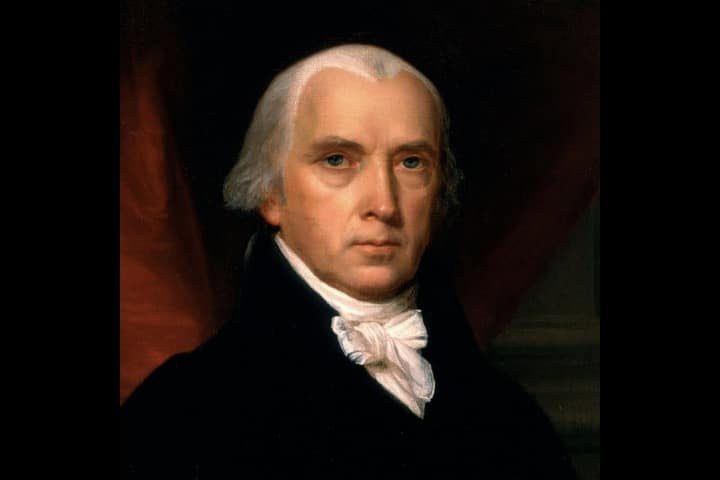
During his stay in New York in the spring of 1787, James Madison re-read the essay by David Hume called “On the Idea of the Perfect Commonwealth.” Such treatises were very influential on the men who would craft the Constitution of 1787. Other modern European and English writers — primarily James Harrington and John Milton — as well as ancient authors such as Cicero and Plato, had drawn up detailed blueprints for the perfect republic. Each one of these great thinkers warned of the dangers of democracy.
For example, Plato asks, speaking of democracy, “Is it not the excess and greed of this and the neglect of all other things that revolutionizes this constitution too and prepares the way for the necessity of a dictatorship?”
Cicero, striking a similar note, warns, “No tempest or conflagration, however great, is harder to quell than mob carried away by the novelty of power.”
These admonitions served the American statesmen well as they prepared their minds for the difficult and draining days that would precede the approval by the delegates of the Constitutional Convention.
Hume, along with Montesquieu and almost all other political theorists, believed that republics were only possible when confined to small areas. Representation, true representation, was not possible over a vast continental land mass. Madison would digest this discussion, synthesize it, and create an entirely new take on the topic in the days following the convention. For now, however, he was simply soaking up all the learning from the leading lights of statecraft.
Madison reported that during his scholastic sojourn in New York in the spring of 1787, he began to “revolve the subject” of how to construct a general government of the union that would at once promote and protect liberty and ameliorate the sectionalism that was liable to tear it apart. As usual, Madison did not just read and ponder the problem, but took detailed notes of his mental exertions and his discoveries in the documents he studied. Madison called the result of this recording of observations and impressions the “Vices of the Political System of the United States.”
These notes, along with letters written to Thomas Jefferson, Edmund Randolph, and George Washington during this period, contain what one biographer called “the first shoot in his [Madison’s] thoughts of a plan of federal government.” In fact, these letters, along with his memorandum on the vices present in the political order of the several states, form the basis of what would be distilled very soon thereafter into the Virginia Plan, which Randolph would lay before the delegates in Philadelphia that May.
Upon arriving in Philadelphia in the days immediately preceding the opening of the convention, Madison and his fellow Virginians unanimously selected General George Washington as their leader. Aside from Benjamin Franklin, Washington was the most famous man who would attend the august confab. Naturally, then, his colleagues felt he was the best man to lead their state in deliberations on the proposed constitution.
As leader, it was suggested that Washington should be the man to present Madison’s plan (known to history as the Virginia Plan) to their fellow convention delegates. Washington, with his typical habit of humility, demurred, preferring, he said, that the proposal be presented by the much younger Edmund Randolph, the governor of Virginia. The other men agreed to accept Washington’s refusal, and designated Randolph as the man who would be the voice of the Virginia Plan when the convention began.
At 36 years old, Madison was by far the youngest of the Virginian delegates, but any one of them would have declared him to be the “intellectual leader of the gathering.”
Alongside James Madison, George Washington, and Edmund Randolph, two other illustrious Virginians were members of this extraordinary ensemble.
George Mason, the oldest of the group, was an accomplished statesman and lawgiver. He was the principal author of the Virginia Declaration of Rights and the Virginia Constitution.
A third man named George — George Wythe — was, at 61, one of only six delegates at the convention older than sixty. Wythe was the young union’s first formal law professor, counting Thomas Jefferson among his pupils. He was such an influential teacher of students who themselves became influential that he was dubbed “The Teacher of Liberty” and the “American Socrates.” Madison was happy to have Edmund Randolph take the lead in introducing the Virginia Plan at the convention — if the convention would ever get started!
With his frustration reaching a boiling point, Madison was relieved when the requisite number of delegates arrived — a full three weeks after he did. Much to his delight, the other delegates began trickling in from 12 states (Rhode Island chose not to send delegates to the Constitutional Convention), and although the Virginians and Pennsylvanians were present on May 14 — the day the convention was scheduled to begin — it wasn’t until May 29 that the necessary number of representatives to constitute a quorum had joined their colleagues and the business of reforming the government of the union of American states could begin in earnest.
This is the second article in a series to be published throughout the summer featuring the issues and individuals that played prominent roles at the Constitutional Convention held from May to September 1787 in Philadelphia.



